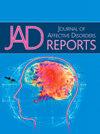Home-use transcranial direct current stimulation (tDCS) as a safe, effective, and feasible application in depression: A randomized, single-blind, placebo-controlled trial
Q3 Psychology
引用次数: 0
Abstract
Introduction
Anodal transcranial direct current stimulation (tDCS) targeting the left dorsolateral prefrontal cortex (DLPFC) alleviates depression symptoms and enhances cognitive functions in major depressive disorder (MDD) patients. Previously, these outcomes were demonstrated primarily in clinical or laboratory settings through randomized placebo-controlled trials. Our objective was to assess the feasibility and effectiveness of asynchronously supervised, home-use tDCS on both mood and cognition in MDD patients, within a randomized, single-blind, placebo-controlled trial.
Method
Twenty MDD patients were randomized into active (N = 11) and sham (N = 9) tDCS groups. The protocol entailed daily 30-minute sessions at 2 mA with the anode over the left-DLPFC and the cathode over the right-DLPFC, conducted five days a week for three weeks. Sham stimulation consisted of a brief 30-second interval between 10-second ramp-up and down periods. After initial training, patients were administered tDCS at home and were evaluated using depression-related questionnaires and cognitive tests at baseline and post-intervention. Adherence and tolerance were asynchronously monitored via a remote supervision platform.
Results
High tolerability (adverse-event incidence rate of 0.63 %) and strong adherence (an average of 14.45 out of 15 sessions completed) were observed for home-use tDCS. The active group demonstrated significantly greater improvements in depression scores (BDI-II) and in cognitive performance (Digit Span tests), compared to the sham group, which received placebo treatment with the same protocol.
Conclusion
The results of our study demonstrate that home-use tDCS is feasible, safe and might be effective for patients with depression, offering a more accessible and cost-effective approach to neuromodulation treatments in mental health.

家庭使用经颅直流电刺激(tDCS)是一种安全、有效和可行的抑郁症治疗方法:一项随机、单盲、安慰剂对照试验
针对左背外侧前额叶皮质(DLPFC)的经颅阳极直流电刺激(tDCS)可减轻重度抑郁症(MDD)患者的抑郁症状并增强认知功能。以前,这些结果主要是通过随机安慰剂对照试验在临床或实验室环境中证明的。我们的目的是在一项随机、单盲、安慰剂对照试验中评估异步监督、家庭使用tDCS对重度抑郁症患者情绪和认知的可行性和有效性。方法20例重度抑郁症患者随机分为活动性tDCS组(N = 11)和假性tDCS组(N = 9)。该方案需要每天以2毫安的速度进行30分钟的治疗,阳极在左侧dlpfc上,阴极在右侧dlpfc上,每周进行五天,持续三周。假性刺激包括在10秒的上升和下降阶段之间短暂的30秒间隔。初始训练后,患者在家中接受tDCS,并在基线和干预后使用抑郁相关问卷和认知测试进行评估。通过远程监测平台对依从性和耐受性进行异步监测。结果家用tDCS耐受性高(不良事件发生率为0.63%),依从性强(15个疗程中平均14.45个疗程完成)。与接受相同方案的安慰剂治疗的假组相比,积极组在抑郁评分(BDI-II)和认知表现(数字广度测试)方面表现出明显更大的改善。结论家庭应用tDCS治疗抑郁症是一种可行、安全、有效的方法,为心理健康方面的神经调节治疗提供了一种更方便、更经济的方法。
本文章由计算机程序翻译,如有差异,请以英文原文为准。
求助全文
约1分钟内获得全文
求助全文
来源期刊

Journal of Affective Disorders Reports
Psychology-Clinical Psychology
CiteScore
3.80
自引率
0.00%
发文量
137
审稿时长
134 days
 求助内容:
求助内容: 应助结果提醒方式:
应助结果提醒方式:


